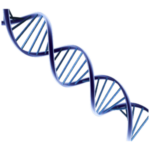Exoskeletons!
Our research activities are focused on the design and control of a class of robotic systems worn or operated by humans to augment human mechanical strength, while the wearer’s intellect remains the central control system for manipulating the robot. Human power extenders can be used to maneuver heavy loads with great dexterity, speed, and precision, in factories, shipyards, airports, construction sites, and warehouses.
The design and control of human power extenders are different from the design and control of conventional robots because they interface with the human on a physical level. The human transfers his/her commands to the extender via the contact forces between the human and the extender, eliminating the need for a joystick, pushbutton, or keyboard to transfer such commands. In this unique configuration, the human body, in physical contact with the extender, exchanges both power and information signals with the extender. Because of this unique interface, the human becomes an integral part of the robot and “feels” the load that the power extender is carrying. The hypothesis is that these machines when worn by workers to maneuver loads, prevent back injuries in workers. When the worker uses the extender to touch and manipulate a load, the extender transfers to her/his arm, as natural feedback, a scaled-down value of the actual load weight which the extender is manipulating: the human “feels” the load weight in the manipulations. In this way, the extender prevents back injuries to workers maneuvering loads.
![[highbleex.jpg]](http://www.zuckervati.com/archives/images/highbleex.jpg)
![[bleex_detail.jpg]](http://www.zuckervati.com/archives/images/bleex_detail.jpg)
http://www.me.berkeley.edu/hel/bleex.htm

 Previous Post
Previous Post